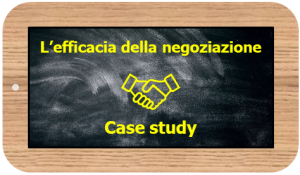
We often think that negotiating is difficult, complex, tiring and ultimately not worth it.
But just as often we do not fully reflect on how ‘negotiating’ can be more effective than ‘litigating’ in, say, a court of law.
A practical case may help.
Client Company
Food packaging Company
Requirement of Client
Request for legal assistance, following legal action brought by an employee for an injury sustained while using a machinery
Elements of dispute
The amount claimed as compensation, which in itself is significant, appears also to be overestimated.
The client’s insurance company does not intend to pay, pending the criminal investigation and alleging improper use of the machinery by the employee.
Traditional legal approach (in a nutshell)
Initiation of legal (civil) proceedings, drafting and filing of deeds, participation in hearings, examination of witnesses, admission of experts, drafting and filing of pleadings, first instance judgement, possible appeal and/or following proceedings, possible enforcement proceedings.
The approach taken by the firm
Rather than focusing solely on the purely legal elements, concentrating only on liability and its percentage allocation, the degree of fault and/or causation, the burden of proof and the party liable, etc., it was deemed appropriate to proceed with a different approach.
By initiating an intense phase of negotiation between the various parties involved, each represented by its own lawyer, the ‘real’ underlying interests of the parties were above all taken into account.
A significant and enlightening picture emerged, since the main and common interest lay in the wish to be able to settle the dispute quickly.
The inspection of the client company’s premises and of the machinery that was the source of the accident, carried out by technical experts, by agreement between the parties (i.e. not during a court-appointed technical consultancy), revealed: a) a partial carelessness on the part of the employee in the use of the machinery, b) a partial superficiality in the training provided, c) a drafting of the machinery instruction manual that was not strictly accurate.
It was evident that identifying and ascertaining liability, quantifying it in percentage terms, and satisfying the burden of proof were arduous tasks, typical of a long, complex and articulated civil trial.
Moreover, each of the parties had further underlying interests, interests that the court proceedings could certainly not satisfy: the employee needed prompt and full compensation to meet the significant costs of rehabilitation, the client company wanted to maintain a good collaborative relationship with the employee, the company producing the machinery wanted to avoid damage to its corporate image.
Conclusion of the case
Negotiations, talks and communication exchanges focused on the real interests rightly prevailed, also thanks to the active participation and good sense shown by all.
What were the conclusions ?
-the employee was compensated and the relationship with the employer, from a relational point of view, improved;
-the client company did not suffer any premium increase in the subsequent contract with its insurance company and, at the same time, implemented training in the use of the machinery;
-the company manufacturing the machinery avoided reputational damage and has initiated a corrective process in the drafting of the instruction manual, thus averting similar cases in the future.
The satisfaction of all the parties involved was therefore great, as they were able to settle the dispute confidentially, with limited costs and in a short time, in the face of a judicial situation that from the outset had appeared articulated, complex, lengthy, tedious (even in the reconstruction of facts occurring at a distance of time) and more expensive.
And equally great was the satisfaction of the firm which, having always adopted common sense principles and privileged negotiation (rather than conflictual) instruments, has seen its conviction strengthened that only negotiation (when conducted with a proactive spirit and in good faith) and/or mediation (when its original purpose is understood and correctly used), without sacrificing anyone’s rights or disregarding the obligations of others, can resolve disputes saving also business relationships and even build new relational and business opportunities.
